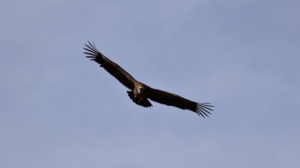Around the world, there aren’t any tropical cyclones for the start of this week. Officially the Atlantic hurricane season starts in May but there aren’t any in the Indian or Pacific oceans nor near Australia or the Philippines. China and Japan have seen more sand and dust from the Mongolian interior, there have been red wind warnings for Croatia in an area that is popular for sailing holidays. And in North America, there has been more heavy rain and snowfall as the UK model charts show hints of colder air, frost even wintry showers for late April. Parts of Wisconsin have seen around 20″ of snow.
NORTH AMERICA
The Canadian state of Ontario also has warnings for winter weather including blowing snow. The USA continues to see heavy snow for a few northern states. As we move through April, this is turning to wet snow and brings the risk of flooding. This is from a “strong spring storm” for Wisconsin and Minnesota, in the north near Lake Superior. Last week it was Florida seeing torrential rains from slow-moving thunderstorms including supercells. Here the airport flooded and closed as historic rainfall (over 25”, 635mm) occurred and the area remained submerged for days afterwards.
Parts of the Upper Great Lakes saw heavy snow and gusty winds. The Upper Midwest experienced flooding in the snowmelt. A new system is forecast to bring rain and heavy mountain snow to the Northwest with gusty winds. This is now quite late in the season with several inches of snow forecast, which will impact travel and could pull down trees or power lines.
The snow is wet and heavy at this time of year and yet there are still blizzard conditions forecast in very windy weather. The Northland, Minnesota has had near-record amounts of snowfall this winter. It’s been quite the season.
Croatia has various warnings for strong winds to start the week including a red warning over the Velebit channel. This near-gale force NE wind is the Bora (Croatian- bura). It is a North to NE Katabatic wind which affects the Adriatic Sea. A Katabatic wind is a “downslope gravitational flow of colder and denser air beneath the warmer and lighter air”. Cold air can accumulate in valleys by night as the result of katabatic flow but there can also be sudden violent winds down ice or snow-topped mountain sides which then flow out to sea.
‘The area where some of the strongest bora winds occur is the Velebit mountain range in Croatia. This seaside mountain chain, spanning 145 kilometres, represents a huge weather and climatic divide between the sharp continental climate of the interior, characterized by significant day/night temperature differences throughout the year, and the Adriatic coast with a Mediterranean climate. Sailing during the bora can be challenging and it requires caution… Experienced seamen have a proverb: “When bora sails, you don’t!” Sailing can be extremely dangerous for an inexperienced navigator in the Velebit channel because the wind can start suddenly on a clear and calm day’ Prima Sailing.
CHINA
In China there has been poor visibility and high air pollution levels as dust and sand moved from Mongolia across Beijing and Shanghai. There were hazardous air quality levels with health warnings. Tokyo and Sapporo also saw a covering of sand and sand in the air which was not as usual being further east in Japan.
The eerie yellow tinge has occurred a few times already this year as residents try to continue their everyday lives in the severe condition. It is rare for a severe sandstorm to reach across to Japan.
“Dust storms are common over China, especially in the spring, when strong winds sweep dust from the Gobi Desert. The Gobi Desert, located in Mongolia and northwestern China, is filled with copious amounts of dust and sand, which easily is lifted into the atmosphere by passing winds.” NASA
Source : Netweather































